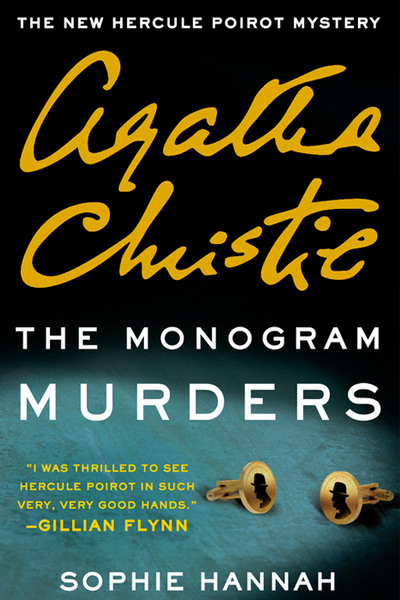The Return of Hercule Poirot in Sophie Hannah’s The Monogram Murders
 Whether you realize it or not, we cured death not so long ago—at least when it comes to literary characters. Hercule Poirot, the diminutive and fussy Belgian detective made famous and beloved in 33 novels and other works written by Agatha Christie, is the latest character to be reclaimed from his deceased creator, dusted off, and brought back to life, appearing in his 34th novel after nearly forty years: The Monogram Murders, by Sophie Hannah.
Whether you realize it or not, we cured death not so long ago—at least when it comes to literary characters. Hercule Poirot, the diminutive and fussy Belgian detective made famous and beloved in 33 novels and other works written by Agatha Christie, is the latest character to be reclaimed from his deceased creator, dusted off, and brought back to life, appearing in his 34th novel after nearly forty years: The Monogram Murders, by Sophie Hannah.
The story is perfect Christie. It’s 1929, Poirot is at the height of his fame, and, seeking respite from his burdens, living anonymously at a London lodging house. After becoming addicted to a local coffeehouse’s superior brew, in a very Poirot-like manner, he encounters a mysterious young woman there who seems to believe she will soon be murdered. Almost immediately afterward, Poirot and fellow lodger Inspector Edward Catchpool of Scotland Yard are brought in to investigate three deaths at a posh hotel.
It’s the classic “impossible” crime, complete with missing room keys, a mysterious untouched afternoon tea, and plenty of people being evasive or outright deceptive about their identities and connection to the deaths. Hannah handles the mystery with aplomb in the early going, capturing the painful bafflement of Catchpool—who is the main narrator, although he relates many scenes as if from Poirot’s point of view—and the ominous series of details that make a mystery so wonderful and tense at the same time.
She also captures the essence of the Poirot character very well—his benign arrogance, his enthusiasm for consumables, his tolerance of his slower-witted companions (including a fair amount of affection for Catchpool, who spends an inordinate amount of the story making readers wonder how he ever became an Inspector).
Then there is the sheer pleasure of seeing Poirot on the page again. For any Christie fan, hearing about a new Poirot novel undoubtedly inspires doubt and trepidation; even the weaker Christie novels at least had the master’s touch. Hannah has managed an impressive balancing act, capturing the essence of a Poirot mystery and embracing the time period it’s set in, but also writing a modern book that will please even those unfamiliar with Poirot. In fact, his characterization is a main strength of the book.
Ultimately, The Monogram Murders is well worth the time of any Christie fan, or, indeed, any fan of a well-constructed mystery with plenty of whiplash revelations. Now that Sophie Hannah has this one under her belt, one hopes there will be many, many more. Simply put, it’s good to have the Little Grey Cells back at work, n’est-ce pas?
The Monogram Murders is available now.